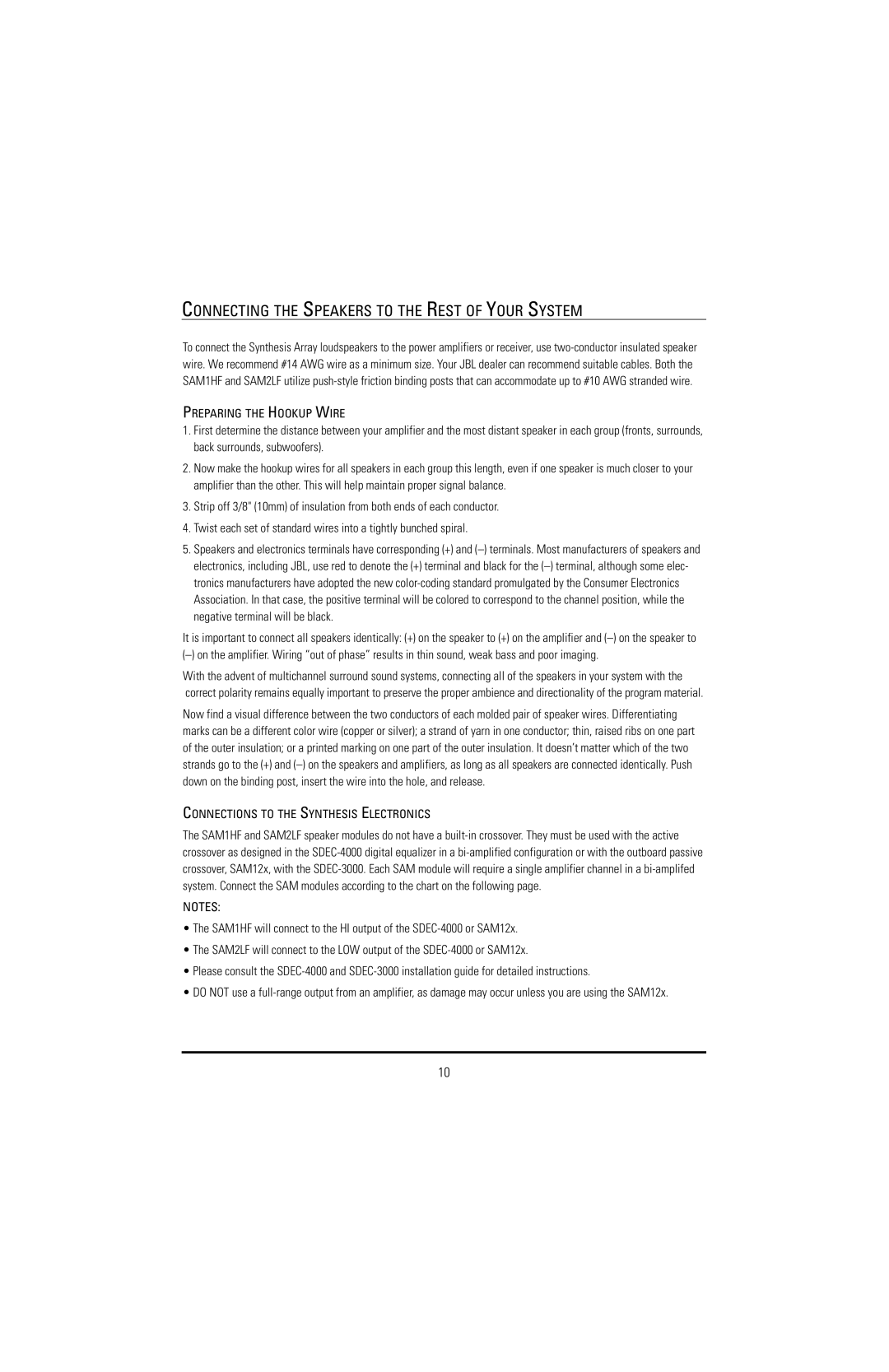
CONNECTING THE SPEAKERS TO THE REST OF YOUR SYSTEM
To connect the Synthesis Array loudspeakers to the power amplifiers or receiver, use
PREPARING THE HOOKUP WIRE
1.First determine the distance between your amplifier and the most distant speaker in each group (fronts, surrounds, back surrounds, subwoofers).
2.Now make the hookup wires for all speakers in each group this length, even if one speaker is much closer to your amplifier than the other. This will help maintain proper signal balance.
3.Strip off 3/8" (10mm) of insulation from both ends of each conductor.
4.Twist each set of standard wires into a tightly bunched spiral.
5.Speakers and electronics terminals have corresponding (+) and
It is important to connect all speakers identically: (+) on the speaker to (+) on the amplifier and
With the advent of multichannel surround sound systems, connecting all of the speakers in your system with the correct polarity remains equally important to preserve the proper ambience and directionality of the program material.
Now find a visual difference between the two conductors of each molded pair of speaker wires. Differentiating marks can be a different color wire (copper or silver); a strand of yarn in one conductor; thin, raised ribs on one part of the outer insulation; or a printed marking on one part of the outer insulation. It doesn’t matter which of the two strands go to the (+) and
CONNECTIONS TO THE SYNTHESIS ELECTRONICS
The SAM1HF and SAM2LF speaker modules do not have a
NOTES:
•The SAM1HF will connect to the HI output of the
•The SAM2LF will connect to the LOW output of the
•Please consult the
•DO NOT use a
10
